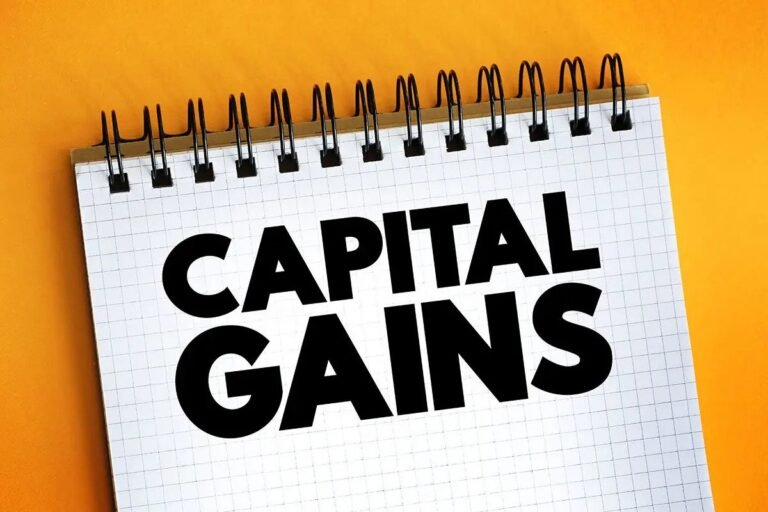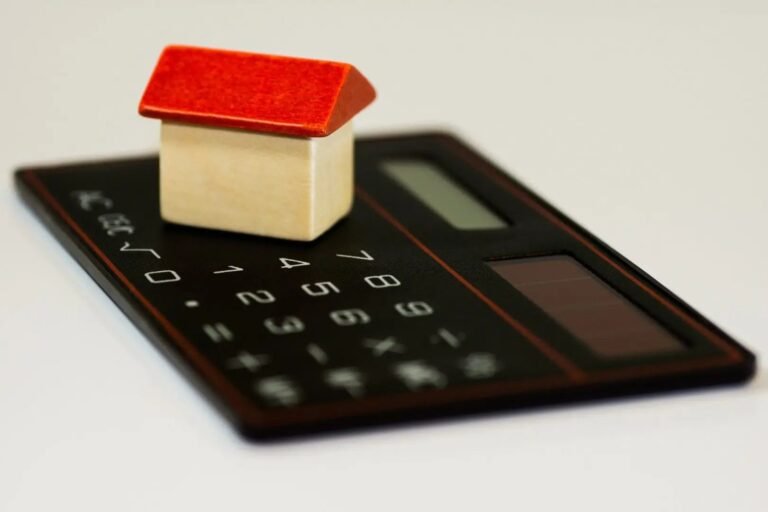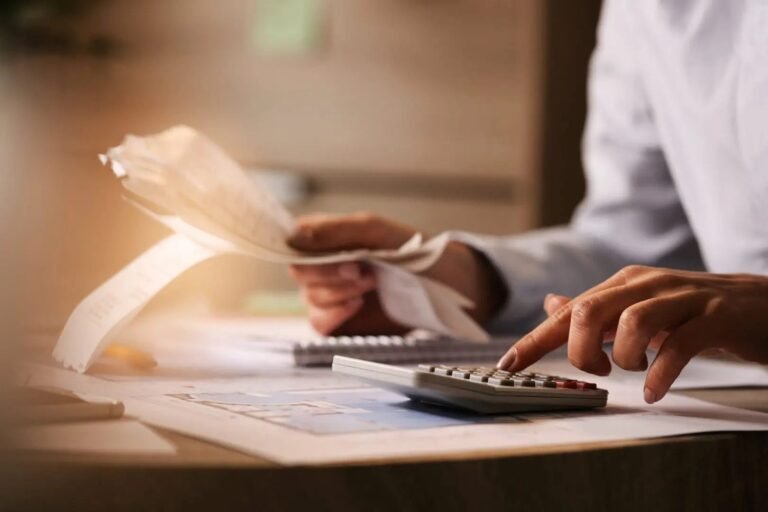When a company spends money on assets that will benefit the business in the long run, such as purchasing machinery or vehicles, it cannot deduct the full cost from its taxable profits. This is because the expenditure has an “enduring benefit” and will continue to provide value to the business beyond the current year.
However, there is a form of relief available for companies that invest in capital assets. Instead of deducting the full cost of the asset from profits, the company can claim “capital allowances.”
Capital allowances are a form of tax-approved depreciation that compensate for the reduction in value of the asset over time. This means that a portion of the cost of the asset can be deducted from the company’s taxable profits each year, until the full cost of the asset has been claimed.
It is important to note that not all assets are eligible for capital allowances. Buildings and structures used by a business may also qualify for capital allowances, but specific rules apply. In any case, it is important to understand how capital allowances work and what are the types of capital allowance that are available.
Some major types of capital allowance relevant for property investors are:
- First Year Allowance
- Annual investment allowance
- Written down allowance
- Structure and building allowance
First Year Allowance
First-year allowances (FYAs) are a type of tax relief that helps businesses save money when they buy new equipment.
When a business buys new equipment for their operations, they can claim tax relief on the cost of the equipment over a number of years. However, with FYAs, businesses can claim a larger amount of tax relief in the first year that they purchase the equipment.
This means that businesses can reduce their tax bill and have more money available to invest in their operations.
FYAs are a great way for businesses to improve their cash flow and invest in new equipment that can help them grow and become more efficient.
A Complete Guide on Capital Allowances on Property
A comprehensive guide on Capital Allowances on Property. Learn valuable tax relief tool, especially for businesses operating in the UK property sector.
100% First Year Allowance (FYA)
There are special types of qualifying expenditure that are eligible for FYAs at 100% that is whole of the expenditure is deductible from trading profit.
Following type of assets if bought unused attract FYAs at 100%:
| Expenditure incurred before | Type of asset |
|---|---|
| 01-Apr-23 | Plant and machinery for an electric charging point |
| 01-Apr-25 | Electrically propelled cars |
| 01-Apr-25 | Cars who have CO2 emission of 0g/km |
| 01-Apr-21 | Cars who have CO2 emission not exceeding 50g/km |
| 01-Apr-25 | Zero emission goods vehicle |
Other type of capital expenditure which attract 100% FYA are:
- Capital expenditure on research and development incurred by a trader
- This also includes plant, machinery and buildings (but not land) used for the purposes of carrying out research and development
Temporary First-Year Allowances
If you’re a company that incurs qualifying expenditure between April 1, 2021 and March 31, 2023, you can benefit from this amazing allowance!
The Temporary First-Year Allowances allows you to claim tax relief on your expenses in the very first year, meaning you can save money right away. So, if you have invested in your business to improve your equipment within the time frame, make sure to take advantage of this allowance.
Under temporary first year allowances there are two sub-types namely:
- Super-deduction
- SR allowance
Super-Deduction
Did you know that investing in plant and machinery could actually save you more money than you think?
That’s right!
If you purchased equipment from 1 April 2021 until 31 March 2023 that qualifies for the general pool, you can be eligible for a super-deduction expenditure.

This means that you can claim a whopping 130% first-year allowance (FYA) on your new equipment, which is also known as a super-deduction. So not only will you be upgrading your business with new and improved machinery, but you’ll also be reducing your tax bill and keeping more money in your pocket.
It’s a win-win situation!
Example of plant and machinery that may qualify for the super-deduction includes (but is not limited to):
- Machines such as computers, printers, lathes and planers
- Office equipment such as desks and chairs
- Vehicles such as vans, lorries and tractors (but not cars)
- Warehousing equipment such as forklift trucks, pallet trucks and stackers
- Tools such as ladders and drills
- Construction equipment such as excavators, compactors, and bulldozers
- Some fixtures such as kitchen and bathroom fittings and fire alarm systems
Integral features do not qualify for the super-deduction but may qualify for the special rate first year allowance.
SR Allowance
If your expenditure is on plant and machinery that qualifies for the special rate pool, you may be eligible for an SR Allowance.
The SR Allowance is a tax relief that allows you to claim 50% First-Year Allowance (FYA) on your qualifying expenses incurred between 1st April 2021 to 31st March 2023. This means that you can save a whopping 50% of the cost of your equipment right off the bat!
Plant and machinery that may qualify for the special rate first year allowance includes (but is not limited to):
- Integral features (such as lifts, escalators, air conditioning systems etc.)
- Thermal insulation added to existing buildings.
- Solar panels
- Assets with a useful life of at least 25 years
You can find more on this topic in our article “Capital Allownces: Full Expensing and 50% FYA”.
Annual Investment Allowance (AIA)
The Annual Investment Allowance (AIA) is designed to encourage investment and reduce the costs of capital, which is music to our ears!
Similar increases and decreases in AIA claims in past years have appeared to follow changes to the AIA threshold.

With the AIA, you can get a 100% allowance on your investment in plant and machinery (excluding cars) up to a certain amount. There was a large increase in AIA claims in tax year 2019 to 2020, increasing by 55% or £8 billion, to £22.7 billion.
The most likely reason for this significant jump was a rise in the AIA threshold on the 1 January 2019, from £200,000 to £1 million. This temporary threshold increase expired on 31 December 2020 but meant that the full 2019 to 2020 tax year was included.
The limit for the AIA from January 1, 2019 is £1 million. Keep in mind that if your accounting period is less than 12 months, the AIA will be proportionately reduced.
So, make sure you use it wisely! You can decide which expenditure to allocate the AIA against, so you don’t have to use it on the first piece of equipment you buy.
Annual Investment Allowance (AIA) restriction you need to look out for!!
- Any unused AIA will be lost – there’s no way to carry it forward to the next year.
- AIA limit is for 12 months if your accounting period is less than 12 months the AIA limit will be proportionately reduced.
- Only one AIA is available to each business each year.
- For the Annual Investment Allowance (AIA), a group of companies is treated as a single business, which means they will only receive one AIA between them, rather than one for each company. A group is defined as a parent company and its 51% subsidiaries. The companies within the group can allocate the AIA among themselves as they choose.
- You can’t get an AIA or FYA if you buy plant and machinery from a “connected person”. The term “connected person” refers to a person who has control of the company or is in control of a company that controls another company.
- Where an individual is both a partner in a partnership and a sole trader at the same time, both businesses will receive an AIA.
- Where an individual carries on two related trades the trader will receive only one AIA, which can be allocated between the trades as they wish.
Capital Allowance Calculator
Try out our exclusive Capital Allowance calculator. Stay ahead of the competition and know your Capital Allowance claim
Structure and Building Allowance (SBA)
Are you planning to build a non-residential building for your business?
Then you may be eligible to claim a Structures and Buildings Allowance (SBA). This allowance is available for buildings or structures used for business purposes, with construction beginning on or after 29th October 2018.
You can claim relief for buildings such as offices, factories, warehouses and retail premises.
However, if the building is used for residential purposes such as a dwelling, accommodation for school pupils, students or prisons, you cannot claim the allowance. But don’t worry, if your building is used as a hotel or care home, it won’t be considered as residential use and you can still claim the SBA.
How Much Can you Claim?
Structure and Building Allowance (SBA) allows for a flat rate of 3% (previously 2%) of qualifying expenditure per year.
The allowance is spread out over 33⅓ years, starting from when the building is first used for business purposes.
If the allowance begins mid-accounting period, it will be reduced accordingly. Also, the SBA is proportionately reduced for short accounting periods.
What are Qualifying Expenditures For SBA?
New Building and Structures

Are you planning to construct a new building for your business? You might be eligible for a Structures and Buildings Allowance (SBA)! This allowance can help reduce your tax bill by providing tax relief on the capital expenditure incurred during the construction of the building or structure.
But wait, not all costs qualify for relief! While the costs of acquiring land and obtaining planning permission are excluded, necessary land preparation and demolition costs do qualify.
There are also some special circumstances to keep in mind. If you purchase a building that has never been used before, you may be able to claim the SBA on the purchase price of the building, but only for the portion relating to the building itself. And if you purchase an unused building from another business, you can only claim relief on the lower of the purchase price (excluding land) or the qualifying construction costs.
Existing Buildings and Structures
When you renovate or convert an existing building that is already in use for business, the expenses incurred are treated as new construction costs and qualify for the SBA for 33⅓ years, on top of any allowance for the original construction.
This applies even if the original building was in use before October 29, 2018.
However, if the building is not currently in use for business, the SBA will start from the date the building is brought into qualifying use.

It also applies to the cost of an extension to an existing building that’s in qualifying use. Remember to record the amount and date of this expenditure on the allowance statement.
Finally, the cost of providing plant and machinery, including integral features and fixtures, is not eligible for the SBA.
Things to Look Out For in SBA
- If the building starts to be used for residential purposes SBA can no longer be claimed.
- If a building which was previously used for business purposes ceases to be used for any other purpose it will be treated as still being used for business purposes and SBA continue to be applicable.
- If the building is mixed used i.e., part of the building used for residential purposes and part for non-residential (business) purposes the portion of building that qualifies for business use will qualify for SBA relief.
Written Down Allowance (WDA)
You might have heard of the term “writing down allowance” (WDA). In essence, it’s a taxation principle that allows you to claim tax deductions for capital expenditure over a period of years. This concept is similar to the accounting notion of depreciation and serves as a way to ease the financial burden of big-ticket purchases.
Now, let’s delve into the nitty-gritty of how WDAs work. Assets that do not qualify for Annual Investment Allowance (AIA) or First Year Allowance (FYA) are typically pooled together. Each year, a portion of either 6% or 18% of the total amount in the pool can be claimed as an allowance on a reducing balance basis. This reduction is referred to as a written down allowance. Any remaining amount can be carried forward to the next fiscal year.
It’s worth noting that to claim a WDA, expenditure must be pooled. Although some items can be in a single-asset pool, there are mainly three types of pools, including:
Single-asset pools
Main pool
Special pool
Single-Asset Pools
If you’re a sole trader or in a partnership, creating a single-asset pool could be a useful way to manage your assets. These pools are designed for
- Have a short life (for assets you’re not going to keep for a long time)
- You use outside your business if you’re a sole trader or in a partnership
Short Life Assets
For example, let’s say you own a food business and need to replace the crockery in your restaurant. Instead of keeping track of each individual piece, you can pool them together and claim the capital allowances over a shorter period.
It’s important to note that not all assets can be included in a single-asset pool. For instance, cars, items used outside of the business, and special rate items cannot be pooled. Additionally, if you’re still using the asset after eight years, you’ll need to move the balance into your main pool during your next accounting period or tax year.
Single-asset pools are particularly useful for assets that are partly used for qualifying activities and partly for other purposes. So, if you’re looking for a way to simplify your accounting processes and manage your assets more efficiently, consider creating a single-asset pool today.
Main Rate Pool
You can claim 18% tax relief on all ‘plant and machinery’ you buy, unless the items need to go into:
- The special rate pool
- A single asset pool (for example, because you have chosen to treat them as ‘short life’ assets or you’ve used them outside your business)
Special Rate Pool
You can only claim 6% tax relief on:
- Parts of a building considered integral – known as ‘integral features’
- Items with a long life
- Solar panels
- Thermal insulation you’ve added to a building
- Cars with CO2 emissions over a certain threshold – check the threshold for your car, which depends on the car and when you bought it
Integral Features
Integral features are:
- Lifts, escalators and moving walkways
- Space and water heating systems
- Air-conditioning and air cooling systems
- Hot and cold water systems (but not toilet and kitchen facilities)
- Electrical systems, including lighting systems
- External solar shading
Items with a Long Life
If you’re purchasing items that have a useful life of at least 25 years from when they were brand new, you may need to categorise them accordingly.
If the total value of these long-life items exceeds £100,000 in an accounting period, you should allocate the costs to the special rate pool.
On the other hand, if the total value is £100,000 or less, you can put the costs in the main rate pool unless there’s a special factor that qualifies it for the special rate pool.
Keep in mind that the £100,000 limit is adjusted based on the length of your accounting period, such as 10 months. If you’re part of a partnership with limited company members, you should allocate all costs of long-life items to the special rate pool.
How Can UK Property Accountants Help?
Capital Allowance is a complex topic and at times it can get confusing. Our experienced tax advisors can help identify qualifying assets along and claim the capital allowance in most beneficial making use of the reliefs in best way possible.









